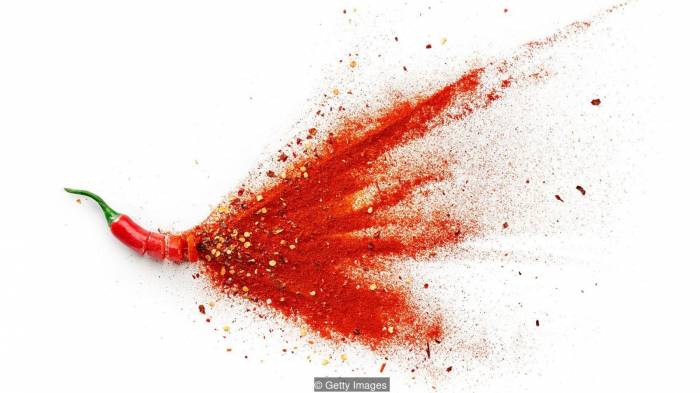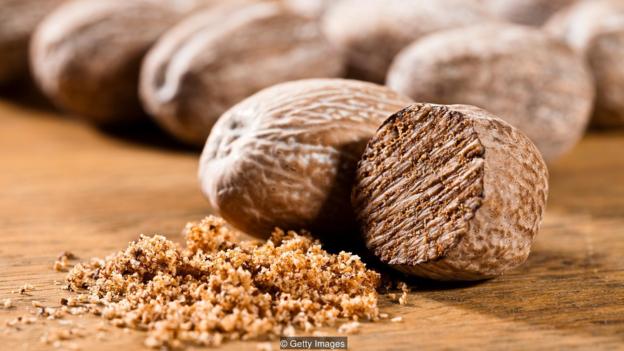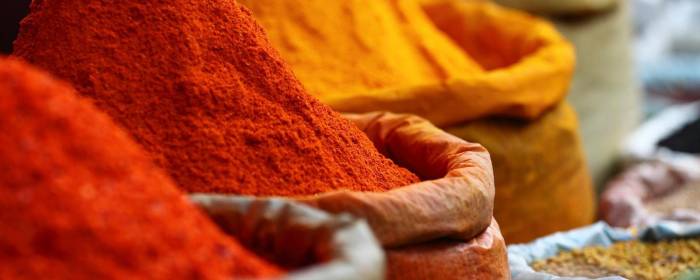Human beings around the world delight in fiery foods. Thai, Mexican, Chinese, Indian, Ethiopian – the cuisines that can take the roof off your mouth are numerous and flavourful.
Ranking the world's most spicy peppers and comparing the most awe-inducing dishes is a common pastime, even if, past a certain point, the distinctions are somewhat moot. Who can say, subjectively speaking, that one Indian restaurant’s Widower Phaal, made while wearing goggles with chilis that rank about 1,000,000 on the Scoville Scale – an international measurement of pungency – is necessarily a fierier experience than the notorious Korean Suicide Burrito?
There's plenty of burn to go around: more common dishes include vindaloo with ghost peppers and hot pot from Sichuan, where you must part a swarm of chillis bobbing in a sea of broth to fish out tender, fiery morsels of meats and vegetables.
As you savour these intense tastes, however, you may wonder, why do some cuisines compete for the title of spicy champion, while others feature barely the hint of a burn?
This is a question that has intrigued anthropologists and food historians for some time. Indeed, it's a curious truth that places with warm climates do seem to have a heavier preponderance of hot and spicy dishes. That may have something to do with the fact that some spices have antimicrobial properties, studies have found.

Chillis pack fierce heat but also antimicrobial agents that could have been useful in the days before refrigeration (Credit: Getty Images)
In one survey of cookbooks from around the world, researchers note: “As mean annual temperatures (an indicator of relative spoilage rates of unrefrigerated foods) increased, the proportion of recipes containing spices, number of spices per recipe, total number of spices used, and use of the most potent antibacterial spices all increased.” In hot places, where before refrigeration food would have gone off very quickly, spices might have helped things keep a bit longer – or at least rendered them more palatable.
It's also been suggested that because spicy food makes most people sweat, it might help us to cool off in hot parts of the world. The evaporative cooling effect that happens when we perspire is indeed useful in maintaining a body's heat balance. In a very humid climate, though, it doesn't matter how much you sweat: that evaporation won't come to your rescue because there's already too much moisture in the air. One study of people who drank hot water after exercise showed that they did cool down slightly more than those who drank cold water, but only in situations with low humidity. Thailand in August, that ain't.
But spice is hardly limited to the tropics. While chilli peppers are originally from the Americas, this particular kind of heat grew widespread in the 15th and 16th Centuries, travelling with European traders. Other spices – not spicy in the same way as peppers, perhaps, but still strongly flavoured and bringing an extra oomph to a dish – had been circulating in Europe for centuries, with ginger, black pepper, and cinnamon brought in from the east.
Heavily spiced dishes were the darlings of many cuisines we currently don't think of for their zing. Numerous recipes in one 18th-Century British cookery book include potent doses of mace, cloves, and nutmeg, for instance. What happened?
Well, one possibility is that it became a bit uncouth to like quite so many flavours in one's food, as Maanvi Singh has written over at The Salt. What we now consider classic European cuisine has a tendency to focus on pairing like flavours with like, rather than bringing in a riot of strong, contrasting ones. That may be because, as spice prices plummeted in Europe in the 1600s and it became easier for just anyone to lace their food with them, tastemakers fell out of love with them.
Shifting the goalposts for high-end food, they began to emphasise dishes where the focus was the purest essence of the basic ingredients, combined with flavours that served to bring that out. In a word – it may have been snobbery, Singh writes, that erased the thrill of spice from many European palates.

Many European cuisines used to be heavily spiced with ingredients such as nutmeg (Credit: Getty Images)
Indeed, the role of human culture in determining whether spice is hot or not cannot be underestimated. Like all animals, we use taste as a way to determine what's safe to eat, and once we get used to certain flavors signalling the familiar, we like them all the more. It would not be surprising if some people, having acclimated to chillis, began to prefer them over the absence of chillis.
Today, we have our own reasons for eating spicy foods, and they may have more to do with adrenaline than social status or sheer flavour, per se. The physiological reaction to peppers, as we've discussed here before, is the result of temperature sensors in the mouth being activated. Your body responds as if you had burned it, causing you to sweat and flush, and in extreme cases vomit.
The thrill of triggering this intense experience without (usually) any long-term effects is thought to be part of the attraction – as well as, for some chilli fiends, the bragging rights.
Antimicrobial qualities and body temperature regulation are probably not on the list of possible draws today – something to ponder, and thank your lucky stars for, as you wait for your next curry.
The original article was published in BBC.
More about: spice
















































